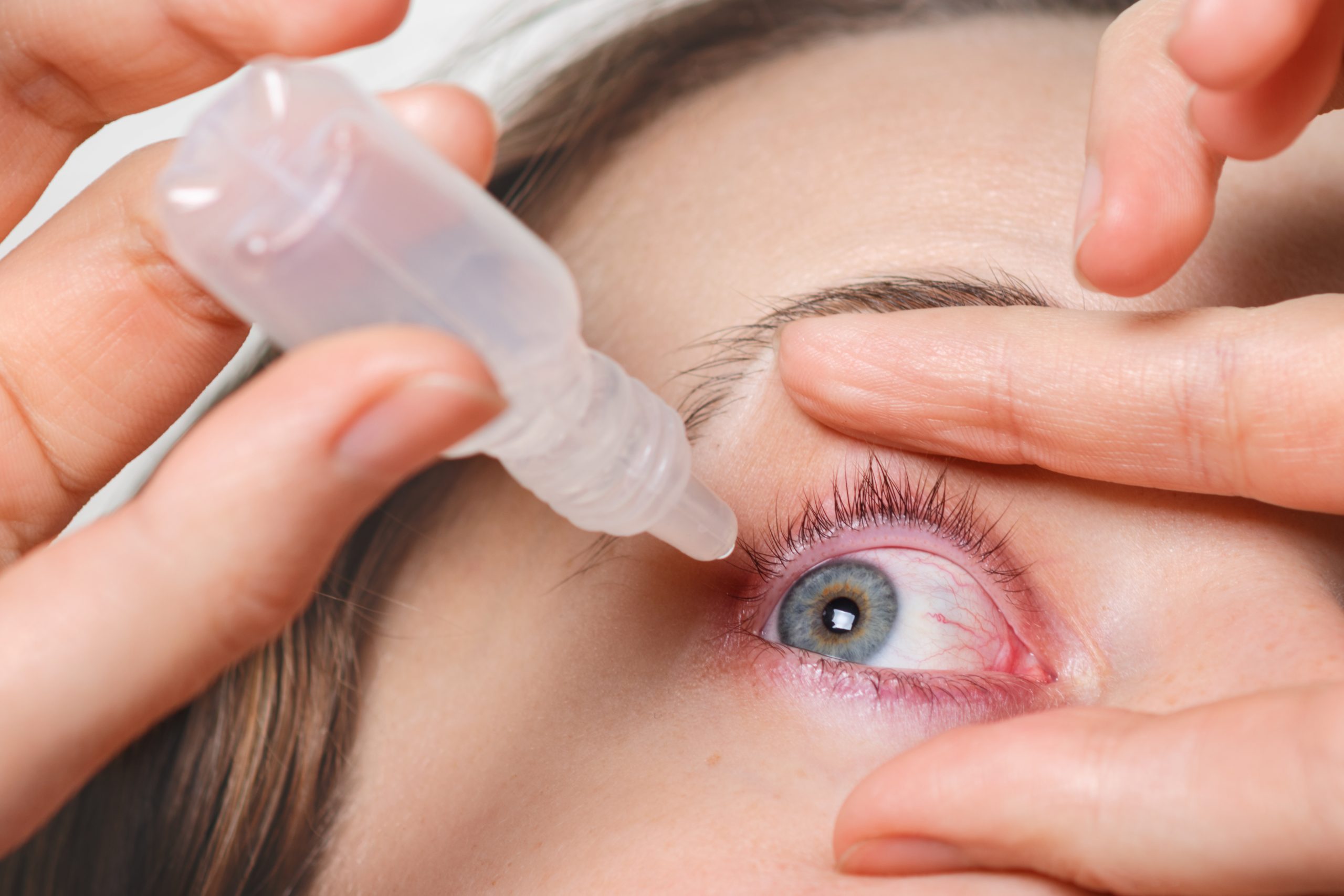I ophthalmic drugs still represent a great challenge for scientists today, due to their low bioavailability.
This characteristic of ocular drugs is due to several factors: the complex anatomical structure of the eye, the small size of the absorption area, low corneal permeability, metabolic processes, and the binding of drug molecules with proteins present in the tear fluid. The penetration of drugs into the eye is also strongly influenced by the defence mechanisms of the eye itself: blinking, tear production, outflow of substances through the nasolacrimal canal, which, combined with the reduced capacity of the conjunctival sac, cause a significant decrease in the concentration of the drug and shorten the residence time of the active ingredient at the application site.
There are mainly three routes of administration of ophthalmic drugs: local or topical, systemic and intraocular. Topical administration is the most widely used. Its disadvantages, however, are related to the limited possibility of administering lipophilic drugs and the high loss of drug in the pre-corneal space. Systemic administration, on the other hand, requires very high levels of drug concentration in the blood, which can cause side effects. In contrast, administration by intravitreal injection is a very effective, but more invasive way of administering the drug in order to reach the posterior structures of the eye and can cause local side effects, such as haemorrhage or retinal detachment.
The development of new formulations in ophthalmology is aimed at achieving the required drug concentration and maintaining it for a long time at the site of administration.
Thanks to a better understanding and knowledge of ocular structures and pathogenetic mechanisms, many innovative ophthalmic drug delivery systems have been developed, which have made it possible to achieve better bioavailability or longer duration of action, and thus to treat certain diseases more effectively.

Multicompartmental systems
Lipid particles
Solid lipid nanoparticles can be distinguished into lipid nanoparticles (SLNs, solid lipid nanoparticles) and nanostructured lipid transporters (NLCs, nanoscale lipid transporters). These are nanometre-sized colloidal systems consisting of a lipid matrix stabilised with surfactants. Lipids used in the preparation of lipid nanoparticles as vehicles ophthalmic drug delivery systems are: triglycerides, capric/caprylic triglycerides, propylene glycol dicaprilocaprate, diglycerides, monoglycerides, aliphatic alcohols, fatty acids with C10-C12 chains, cholesterol and its esters. NLCs, so-called second-generation lipid nanoparticles, offer several advantages, including controlled drug release, absence of cell toxicity, increased corneal penetration and improved drug bioavailability. Due to their biocompatibility and mucoadhesive properties, SLNs exhibit greater interaction with the mucosa of the eye and thus prolong the dwell time of the drug in the eye and allow it to cross the corneal barrier. Medicinal substances in the form of SLNs can effectively penetrate the epithelium due to their lipophilic properties.
Liposomes, niosomes, hybridised vesicles and dendrimers
Liposomes are small vesicles consisting of a lipid bilayer, capable of containing both hydrophilic and lipophilic drugs. They are usually composed of phosphatidylcholine, stearylamine and varying amounts of cholesterol or lecithin and α-L-dipalmitoylphosphatidylcholine. The use of liposomes in ophthalmic formulations improves the bioavailability of the active ingredient and protects it from enzymes present on the surface of the corneal epithelium. Positively charged liposomes, as opposed to negative and neutral liposomes, have a higher affinity for the negatively charged corneal surface and conjunctival mucoglycoproteins. Consequently, elimination of the active ingredient from the application site is slower.
Liposome-like bilayer carriers, which are used to transport both hydrophilic and hydrophobic particles, are called niosomes. Unlike liposomes, they are chemically stable structures consisting of non-ionic surfactants. Furthermore, they belong to the biodegradable, biocompatible and non-immunogenic carriers that prolong the contact time of the drug substance with the cornea, increasing its bioavailability.
Hybridised vesicles, on the other hand, have been developed as a new topical delivery system and are able to increase the drug's ability to penetrate the eye compared to conventional liposomes.
Finally, dendrimers are branched, spherical, monodisperse, three-dimensional polymeric structures. Polyamine dendrimers, used as vehicles for ophthalmic drugs, have been shown to prolong the duration of action of active ingredients and increase their bioavailability.
New forms and delivery systems for ophthalmic drugs
Ocular inserts are solid or semi-solid dosage forms of drugs for the treatment of ocular diseases. They are less susceptible to ocular defences, such as blinking or tearing, and can, therefore, remain in the conjunctival sac longer than conventional ophthalmic formulations. The advantage of this formulation is the ability to achieve a carefully dosed, slow release of the active ingredient at a constant rate and to reduce systemic absorption. In addition, the sustained release allows for a decrease in the frequency of application and, therefore, the occurrence of side effects. The following polymers are used: methylcellulose and its derivatives, polyvinylpyrrolidone, polyvinyl alcohol, chitosan and carboxymethyl-chitosan or gelatin.
Implants consist of a solid form of a drug, which is inserted into the anterior segment of the eye to achieve a controlled release of the active ingredient over a long period of time. Implants can be surgically inserted in the subconjunctival or vitreous area. The advantage of implants is that they allow the active ingredient to be administered directly into the eye, thus reducing systemic side effects.
Micro-needles have been used as drug delivery systems for over two decades. They have been shown to significantly increase the effectiveness of transdermal drug delivery. Micro-needles can be used to target drug delivery to ocular tissues with minimal invasiveness and can inject free active ingredients and encapsulated nanoparticles.
Drug-eluting contact lenses allow continuous release of the active ingredient directly onto the ocular surface. They also increase drug penetration through the corneal epithelium, compared to conventional eye drops.
Iontophoresis, finally, is a non-invasive technique in which a low electric current is used to increase the penetration of an ionised drug into the ocular tissue. It ensures a high intraocular concentration of active ingredient while minimising systemic exposure. It is used to treat corneal ulcers, dry eye syndrome, keratitis and uveitis.
Bibliography
